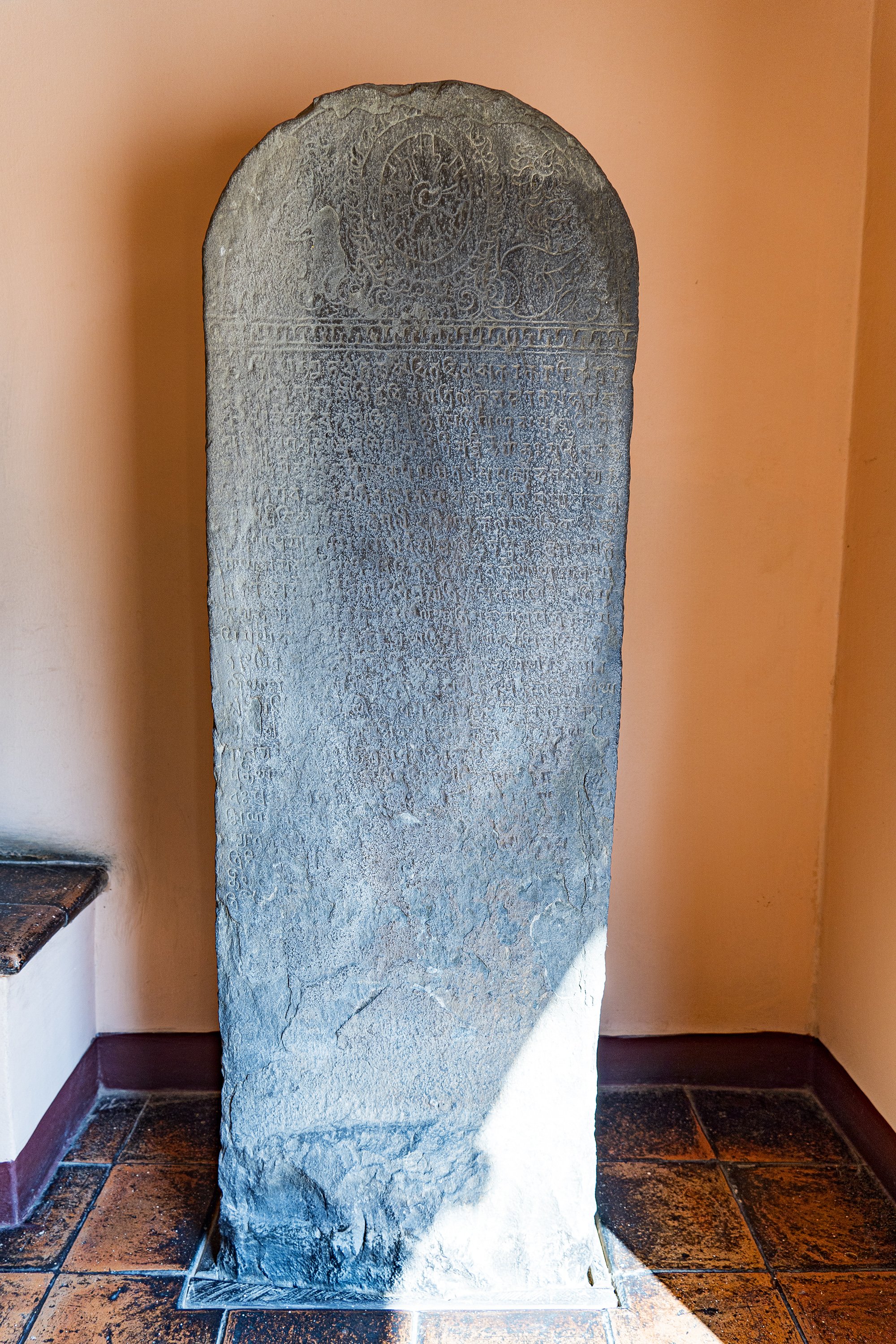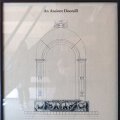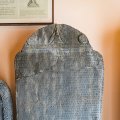Patan Museum (Nepal): photo 7
Photo 7 of 212 in Gallery: Patan Museum (Nepal)

Image title: Historical Records on Stone Slabs
Description of the photo
The inscribed stone slabs seen nearby and others in the galleries and adjacent garden record a wide variety of information. They are primary records of the political and cultural history of Nepal and therefore are extremely valuable cultural artifacts.
Known as “shilapatra” (शिलापत्र, śilāpatra), literally “stone document,” such inscribed slabs have been used at least since the 5th century A.D. for recording the deeds of king and commoner, particularly their gifts to the gods. The oldest shila-patras were written in the Sanskrit language and an Indian script. In time the writing evolved into a local style known as Licchavi, named after the dominant dynasty which ruled Nepal between at least the 3rd and the late 9th century.
By the 12th century the Newari language and scripts were also used for shilapatras and largely displaced Sanskrit and all earlier scripts by the mid-14th century. At the same time the Nepali language and Devanagari script began to be used in Western Nepal and by the 17th century had reached the Kathmandu Valley. Nepali for shilapatras became increasingly popular after the conquest of the Malla kingdoms by Prithvi Narayan Shah in 1768-69.
Shilapatras from all ages are scattered throughout Nepal, especially the Kathmandu Valley; and a representative number are in the Patan Museum. A royal charter of A.D. 643 stands embedded in the museum’s interior courtyard. Now only specialists can read the older inscriptions but many of them have been translated and published.
[Extra information]
The stone slabs at either end of this group of inscribed shilapatras belong to the Licchavi Period (ca. AD. 200-879). They are composed in Sanskrit and inscribed in an ancient Indian script. The smaller slab on the right proclaims a remission of taxes by two jointly ruling, seventh-century kings. The larger slab on the left, decorated with a recumbent bull, Shiva’s vehicle, is a royal charter issued by King Narendradeva in A.D. 659. It describes a grant for the perpetual worship of Shiva as Lord Vageshvara. It was recovered from a sunken fountain a short distance north of the Patan Museum but many others of this period remain in situ. A charter of this same king, dated AD. 643, and now an object of casual worship, is embedded in this museum’s interior courtyard.
Gallery information:
The Patan Museum is located on the Durbar square of Patan (Lalitpur/Lalitapura, Kathmandu, Nepal) which is associated Keshav Narayan Chowk (Keshavnarayan)—a form of Lord Vishnu. Being listed as a World Heritage Site, the whole of Durbar square is filled with exquisite temples, sculptures and other ancient structures, of which the ancient history history can be traced to the Malla Kings of Lalitpur. It is an important site for both Buddhism and Hinduism.
Photo details:
Date: 2019-12-02
Camera: SONY ILCE-6400
Exposure: 1/60
Aperture: f/4
ISO: 100
Focal length: 18mm
High resolution:
Download file
Size: 3.61 MB
Resolution: 2000 x 3000
© Photograph by Gabe Hiemstra.
License: CC BY-NC-ND 4.0

